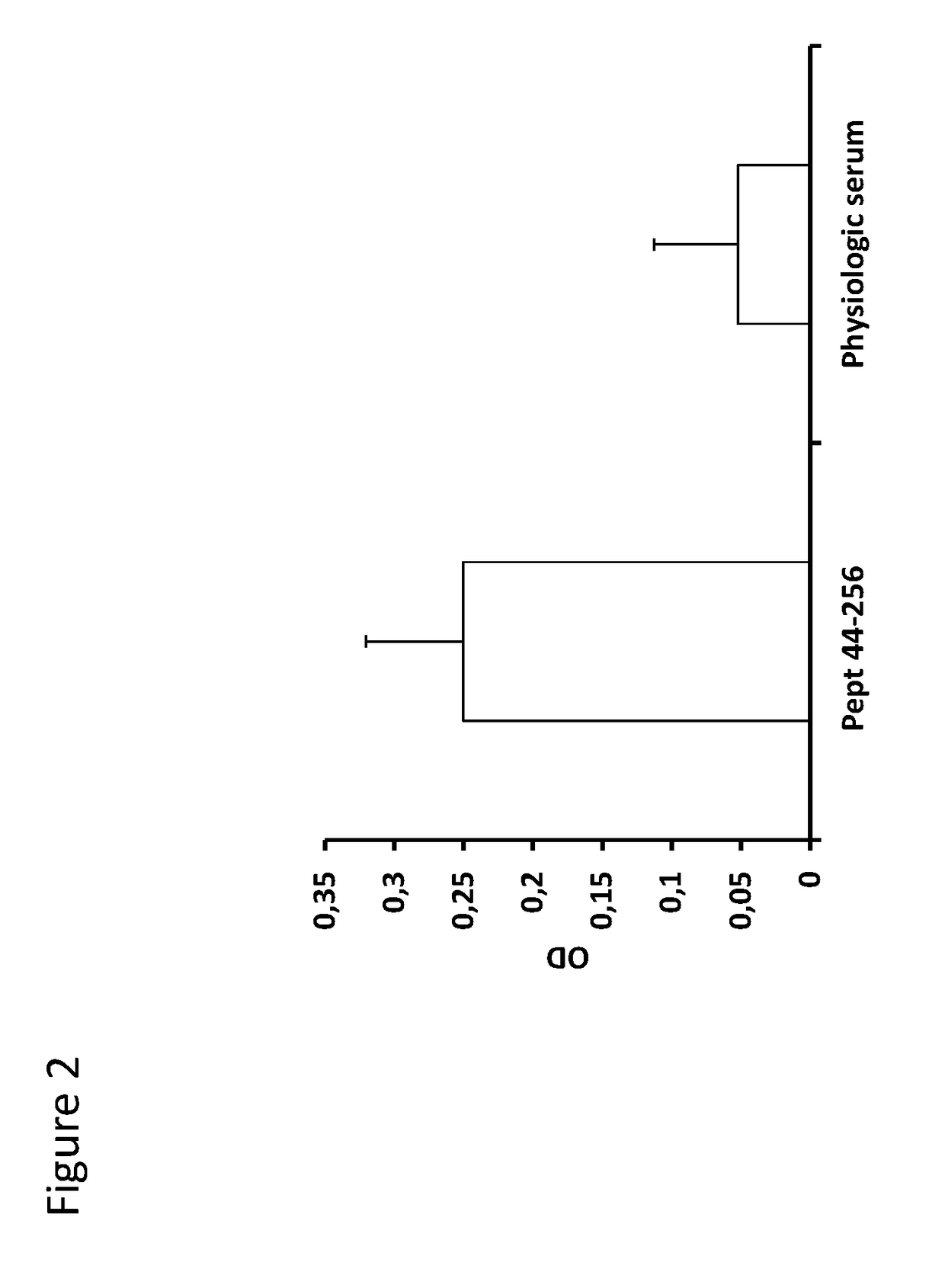Modulation of antigen immunogenicity by deleting epitopes recognized by NKT cells
a technology of antigen immunogenicity and epitope recognition, applied in the field of polypeptides, can solve the problems of rapid loss of transgene expression, limited therapeutic efficacy, and elimination of cells transduced by, and achieve the effect of limited degree of polymorphism and easy synthesis
- Summary
- Abstract
- Description
- Claims
- Application Information
AI Technical Summary
Benefits of technology
Problems solved by technology
Method used
Image
Examples
example 1
on Factor VIII
[0109]Patients suffering from hemophilia A lack sufficient amounts of factor VIII (FVIII), which is the reason for uncontrolled bleeding tendency. Such patients are treated by infusions of FVIII purified from plasma source or produced by recombinant technology. Administration of FVIII results in the formation of specific antibodies, which in more or less 30% of the cases inhibit the function of FVIII as a coagulation cofactor.
[0110]Using an algorithm, we identified within the sequence of the FVIII molecule 3 sequences bearing a CD1d binding sequence, which matched the [FWTHY]-X2X3-[ILMV]-X5X6-[FWTHY] sequence motif. These motifs are located in the A1 and A3 domains, respectively:
[0111]
(aminoacids 309-315, SEQ ID 1)FCHISSH in A1 domain(aminoacids 1816-1822, SEQ ID 2)FWKVQHH in A3 domain(aminoacids 1918-1924, SEQ ID 3)FHAINGY in A3 domain
[0112]These sequences have in common (underlined) an aromatic residue (phenylalanine, F) in position 1, an aliphatic residue (isoleucin...
example 2
s 5 Viral Vectors
[0137]Viral vectors are commonly used for gene therapy and gene vaccination. One of the most common of these viral vectors is derived from adenovirus, serotype 5. Adenoviruses (Ad) are non-enveloped viruses possessing a linear, double-stranded DNA genome of about 35 kb. Human Ad5 has a capsid consisting of 3 major structural proteins: hexon, penton, and fiber. Neutralizing antibodies are raised towards hexon proteins. Such antibodies are very common in humans as a consequence of viral infection. The presence of such antibodies blocks the entry of the viral vector and, consequently, prevents expression of the transgene protein carried by the vector. Anti-Ad5 antibodies are generated in the course of an adaptive response, which depends on activation of CD4+ T cells specific for epitopes presented in the context of MHC class II molecules.
[0138]It is known that Ad5 activates the innate immune system, though the precise mechanism by which it occurs and the location where...
example 3
ly-Modified Proteins
[0143]Proteins to which subjects are exposed by way of inhalation or ingestion are frequently eliciting unwanted reactions in predisposed subjects. Allergic asthma affects millions of people across the world. Food allergy on the other hand has an overall prevalence of ±2.5% in the general population. Allergens either airborne, ingested or penetrating the skin could share properties by which they activate NKT cells.
[0144]One of the most common food allergen is apple (Malus domesticus), and allergenicity is almost exclusively borne by the Mal d 1 protein, a 159 aminoacid long protein, which protects the plant against infectious agents. A sequence motif was identified using computer algorithms, which corresponds to the general motif [FWTHY]-X2X3-[ILMV]-X5X6-[FWTHY] of a CD1d binding sequence.
[0145]
(SEQ ID 9)FKLIESY corresponding to aminoacids 144-150 ofMal d 1
[0146]A recombinant form of Mal d 1, in which F144 and Y150 were mutated in S was produced by genetic engine...
PUM
| Property | Measurement | Unit |
|---|---|---|
| diameter | aaaaa | aaaaa |
| hydrophobic | aaaaa | aaaaa |
| structure | aaaaa | aaaaa |
Abstract
Description
Claims
Application Information
 Login to View More
Login to View More - R&D
- Intellectual Property
- Life Sciences
- Materials
- Tech Scout
- Unparalleled Data Quality
- Higher Quality Content
- 60% Fewer Hallucinations
Browse by: Latest US Patents, China's latest patents, Technical Efficacy Thesaurus, Application Domain, Technology Topic, Popular Technical Reports.
© 2025 PatSnap. All rights reserved.Legal|Privacy policy|Modern Slavery Act Transparency Statement|Sitemap|About US| Contact US: help@patsnap.com



